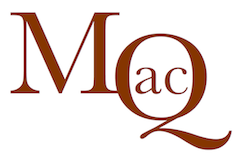
|
|
|
|
|
| Issue 29: | August 2025 |
| Poem: | 68 words |
| + Poet’s Notes: | 154 words |
By Edward Baranosky
1949 No. 1
You can turn the lights out. The paintings will carry
their own fire.
—Clyfford Still*
Clyfford. There is no wind in here. Your turning flames of color rotate as our minds ignite. In the thick of 1949 No. 1 an engineer’s depth of field. The doorway embers swing on an invisible hinge. A specter of electricity exposes the fallacy. Yet your Star-Gate turns, and burns still.
* Publisher’s Notes:
Links in my notes, in Poet’s Notes, and in “More on the Web” below were confirmed on 7 August 2025.
- Source of the epigraph above: Buffalo AKG Art Museum, in the descriptive label for a 2016 exhibition, Shade: Clyfford Still/Mark Bradford:
https://buffaloakg.org/artworks/1964520-1949-m
In a letter written after his 1959 exhibition in Buffalo, Still recalled: “One problem we had was the tendency of the museum people to over-light all of my paints ... my last instruction to [museum director] Mr. Smith was, ‘You can turn the lights out. The paintings will carry their own fire’” (Buffalo AKG Art Museum). - 1949 No. 1 (oil on canvas) by American Abstractionist painter Clyfford Still (1904–1980) may be viewed at Artchive online:
https://www.artchive.com/artwork/1949-no-1-clyfford-still-1949/ - Still’s oil painting with a similar name, 1949-A-No. 1, sold for more than $61 million at Sotheby’s in New York on 9 November 2011. An image and details are available in “The Painting That Set Clyfford Still’s Auction Record” in HENI Art News (16 April 2025):
https://heni.com/news/article/clyfford-still-1949-a-no-1-2011-11-09 - See also “How Clyfford Still Took Control of the Market for His Work” by Alina Cohen at Artsy (30 December 2019):
https://www.artsy.net/article/artsy-editorial-clyfford-control-market-work
Poet’s Notes:
“1949 No. 1” is an ekphrastic poem to Clyfford Still, from an unpublished collection.
When I was a child, one of my distant uncles ran a restaurant situated on a high bluff overlooking a tidal inlet on the coast of Maine. I spent time there during summer breaks helping out in the kitchen and painting the scenery. When the high tide was running, my uncle loved to go surfcasting for striped bass, inviting my cousins and me to come along, often in the early morning hours. I brought my paint box and attempted to capture the surf by moonlight.
My work is currently represented in the journals Eastern Structures [Journal of Asian Poetry Forms] and Haiku Avenue [X-Force Productions]; also a 20-year inclusion in Lynx, journal of linking poets (Renga). Although I have had a number of chapbooks published, I do not have a full “collection.” So at 78 I’m still “emerging.”
Edward Baranosky
has painted seascapes since he was seven years old. His focus on marinescapes, draws him back to visit his native home on the American east coast, for inspiration from the North Atlantic. His work emphasizes the present, in the ever-changing moments of water. As a poet-artist he crosses the channels and pathways between the visual and the textual. He continues to exhibit in the United States and Canada. Baranosky owns a small press, EAB Publishing, for poetry chapbooks and related material. He currently lives in Toronto, Ontario, Canada.
More on the Web: By, About, and Beyond
⚡ Four Seasons chapbook (EAB Publishing, 2003), with renga by Ed Baranosky and Jen Finlayson, reviewed by Jane Reichhold in Lynx (XIX, 1 February 2004)
⚡ Half-a-dozen of Baranosky’s chapbooks published through his press and listed at Aha Poetry: Four Seasons (2003, 32 pages) as described above; The Outer Coast (2002, 40 pages) with eight poetic forms, B&W ink drawings, and a color cover by Baranosky; Spindrift (2000, 40 pages) with glosa, sijo, ghazal, haiku, and tanka, plus ink drawings; Raindancing (1999, 38 pages) with haiku, tanka sequences, and glosa, plus ink drawings; Eye of the Storm (1998, 40 pages) with haiku and waka-style verse; and Ghostdancing (1997, 38 pages) with poetry, drawings, and cover art by Baranosky
| Copyright © 2019-2025 by MacQueen’s Quinterly and by those whose works appear here. | |
| Logo and website designed and built by Clare MacQueen; copyrighted © 2019-2025. | |
|
Data collection, storage, assimilation, or interpretation of this publication, in whole or in part, for the purpose of AI training are expressly forbidden, no exceptions. |
At MacQ, we take your privacy seriously. We do not collect, sell, rent, or exchange your name and email address, or any other information about you, to third parties for marketing purposes. When you contact us, we will use your name and email address only in order to respond to your questions, comments, etc.